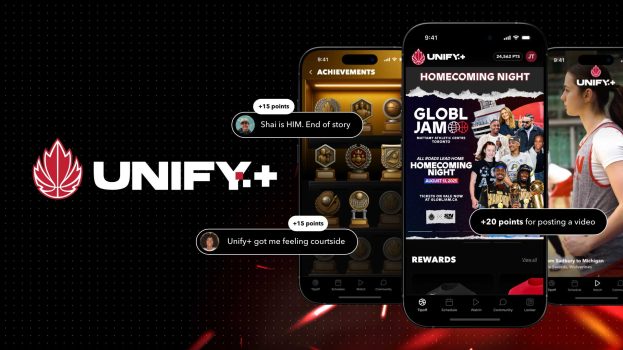By Alyson Gausby
As we spend more of our lives in front of screens and as more facets become digital, we’re starting to crave more human connections online and intelligent relationships with our devices. Like a good friend, consumers want technology and the brands they interact with to help bring quiet into their lives when they need a bit of down time, but also offer surprise and excitement when they’re up for it.
It’s no secret that technology often heightens feelings of information overload. Consumers want a break from this chaos but can’t afford to be offline. I can shut off my email when I get home from work but what is that really accomplishing? The anxiety will inevitably start to set in… What am I missing? Has something urgent come up? Will I be unprepared for tomorrow?
So, I’m not talking about going “off-grid,” but about reducing the clutter of digital connectivity. Microsoft’s latest Digital Trends research found that almost half of online Canadians (45%) are interested in future technology that will be able to predict when they want to be connected and be able to switch on/off automatically. In the years to come, we expect (and I sincerely hope) technology will be better at filtering “important” from “unimportant,” and incoming data, messages and content won’t be for us, but for our technology to process. In other words, Canadians want smart enough tech that knows when to talk to you and when to shut up.
We’re already seeing technology appeal to these needs today. Digital personal assistants, like Osito, are using contextual data to become increasingly proactive, doing thinks like delaying your alarm when your morning meeting has been cancelled or waking you early when there are delays on your commute.
And, consumers are already starting to expect brands to be part of this shift – 41% of online Canadians expect brands to know the right moment to talk to them. Brands need to start focusing on how consumers want to engage and be more mindful of context when they’re creating and delivering content. This means making every communication necessary rather than hopeful and keeping communications simple, minimal and relevant.
But the need for more human connections isn’t only about bringing quiet into consumers’ lives. We’re all familiar with serendipitous shopping experiences – a book cover that catches your eye, a treasure hidden at the back of the sale rack, or a new pop-up shop on your walk to work – but these chance happenings are something that the digital world is still playing catch up to. As our relationship with technology evolves, we want it to understand us so well that it is able to show us new things – even things we didn’t know we wanted.
With the overabundance of information and content available online, consumers are increasingly looking for brands to edit and curate content and recommendations. Today, 43% of Canadians expect technology to deliver tailored experiences that “feel like coincidences” and 30% already expect brands to know them so well that they’re able to offer something they didn’t even know they wanted. And, this trend is only going to increase – 39% of Canadians are interested in using future products and services that are designed to surprise them, but it’s as high as 53% among 18- to 24-year-olds.
Admittedly, this is easier said than done, but brands do have the means to do this better today – leverage the permissioned data consumers already trust you with to get to know them properly. In order to recognize consumers’ signals and respond to their needs, brands need to understand them as people, what they’re doing and the motivations behind their actions, rather than just think of them as a demographic or an online behaviour.
Netflix already recommends content based on reported preferences, past viewing behaviour and what’s trending. It’s not always 100% accurate, but it’s significantly easier to wade through its curated recommendations than trying to browse all the content available.
Taking this a step further, with Xbox One technology, mood can be measured through facial expressions. This could eventually allow us to deliver messaging based on how consumers are feeling as well as the time of day and the activity they’re doing. Imagine the creative possibilities and brand benefit of being able to cheer up a customer when they’re feeling down or add to the excitement when their team has just won the game.
Relevance and timing are key. Tune in when your audience needs you or there won’t be anyone listening. There’s nothing more irritating than being repeatedly interrupted by irrelevant communications, particularly from brands consumers already have relationships with (and should, therefore, know better). It’s like that person you’ve met a dozen times who reintroduces himself every time you see him at a party… and who likes that guy?
Tailored, personalized communications can be the difference between shouting at a crowded theatre and passing a note in class. As consumers’ attitudes towards technology continue to evolve, there will almost certainly be an element of natural selection through unsubscribe buttons and other means. So, brands need to be increasingly conscious that they’re not serving up something irrelevant or interrupting at the wrong time and risk damaging, or even losing, their relationships.
Ultimately, respect consumers and their time. Embrace this change from an “always on” culture to an “always available” one to be seen as that trusted friend.
 As Microsoft’s Canadian insights lead, Alyson Gausby is responsible for translating consumer intelligence into trends research to provide value for the Canadian marketplace. Advertising.microsoft.ca
As Microsoft’s Canadian insights lead, Alyson Gausby is responsible for translating consumer intelligence into trends research to provide value for the Canadian marketplace. Advertising.microsoft.ca
Image courtesy of Shutterstock.























